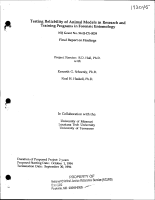Development of a matrix-matched standard for the elemental analysis of human hair by LA-ICP-MS
Journal
Journal of Analytical Atomic Spectrometry
Date Published
August 2025
Agencies
NIJ-Sponsored
Publication Type
Research (Applied/Empirical)



